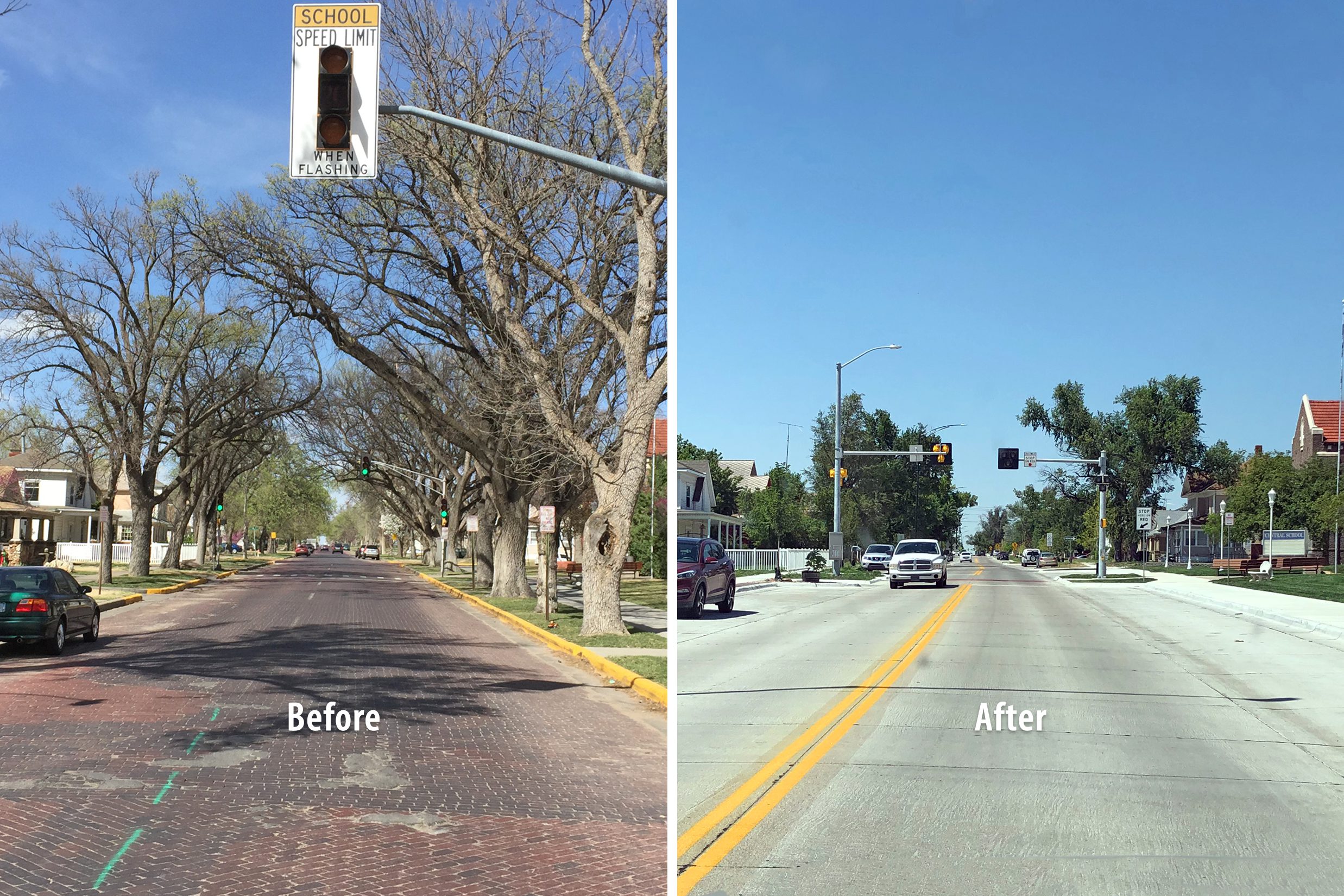Improving Communities Through Public Works

To best plan for expected growth, public works projects can help prepare communities accordingly. This is carried out through the proactive development of the infrastructure needed for rapid change and community enhancements. Public works projects cover a wide range of improvements, from transportation planning to sanitary and stormwater management. While city standards might closely relate to one another, each community is designed according to its own personalized plan for success. Several elements are considered before deciding the most efficient ways to commence development, all of which are closely examined to best fit each individual community.
Re-envisioning Transportation & Infrastructure Feature
One of the main goals of public works is to bring positive change to the way motorists, bicyclists, and pedestrians function individually and interact together in a shared space. We try to keep the users of each transportation mode as safe as possible and aim to keep these systems moving efficiently. There are several valid reasons why a municipality might invest money into public improvements, whether it’s for development, safety, accident prevention, crash history, or user convenience
Many communities across the country are implementing infrastructure elements which are part of a new initiative called Vision Zero. Vision Zero is a modern infrastructure approach that aims for no fatalities from any user on a roadway. Some communities within the Kansas City metro area are implementing these measures at intersections and busy roadways by targeting ways to reduce vehicle speed. Serious injuries to pedestrians and bicyclists are unavoidable in a collision with a vehicle as speeds increase. Likewise, safety features in a car become irrelevant once the vehicle exceeds a certain speed, so Vision Zero’s approach to reducing speeds will help improve community safety for all users of our roadways.
Our public works team was part of an award-winning project located in Dodge City, Kansas. This project focused on bringing needed change to the Downtown area along Central Avenue. Safety and convenience features were implemented for the citizens of Dodge City, creating more ease of mind for residents and visitors during their commute. One of the biggest features was transforming Central Avenue from a one-way street into a two-way street. The City believed this change would have a positive impact on the safety and convenience of the public. The two-way street transformation was not the only change to Central Avenue. Sidewalks were widened and pedestrian crossing signals and flashing beacons were installed in several locations to serve two local schools to improve the safety of students crossing Central Avenue.
These safety measures were implemented to address accidents the community had previously experienced, such as damaged side mirrors along the previous one-way Central Avenue and a non-fatal collision between a vehicle and pedestrian close to one of the schools. These are typical examples of an opportunity for a municipality to invest in public infrastructure and improve pedestrian safety and motorists’ awareness of other users along a corridor.
Preparation & Asset Management Strategies
Before developing an area that is expecting growth in the future, it is advised to plan as thoroughly as possible at the necessary level of infrastructure that would be needed when looking at current and future city planning. Any extra property needed to be purchased for public development as part of a corridor will be cheapest before development begins (especially if you can require a developer to donate it as part of the entitlement process). By buying as much land as possible within a given budget, it could save millions of dollars when land values begin to rise as property becomes more desirable for growth opportunities.
Within the last 10 years, there’s been wider acceptance of asset management strategies as necessary public policy. GIS has been the most common element of how our engineers work with municipalities to map and manage existing infrastructure. It’s a reliable platform used to make sure our staff understands how all of the individual assets (pipes, inlets, valves, signs, street lights, etc.) fit together as an entire infrastructure system. The asset management strategies are more fundamentally sound for budgets as all related infrastructure can be managed properly, seeking maximum value through preventative maintenance and minimizing costly repairs later
Performing stormwater asset management and mitigating stormwater problems help the communities we serve by limiting flooding and protecting infrastructure within a city. One of the best ways to help set communities up for success includes performing preventative maintenance rather than performing reactive maintenance. Regular reviews of system condition over time allows for better targeted corrective action and fewer unpleasant surprises. Issues such as pipe and road failure could cost thousands of dollars when proper maintenance is not completed.
Functional & Modern Infrastructure
Communities that are designed according to modern standards are among the more attractive places for residential, commercial, and industrial development. It is part of our job as civil engineers to work with contractors to incorporate new environmentally friendly, visually appealing, and functional design elements when possible. One of the ways our engineers can do this is by disguising water mitigation strategies in the design. Detention basins and green infrastructure have become increasingly common as we become more focused on conjoining environmental and modern features into infrastructure and stormwater design. We can also create public spaces that have aesthetic enhancements and amenities that welcome people traveling through on foot, by bicycle, or in a vehicle.
BHC is committed to helping our customers succeed in community public works and infrastructure development. To get started on your next community improvement project, contact our Public Works Group Director, Randy Gorton, P.E., PTOE, for more information.
